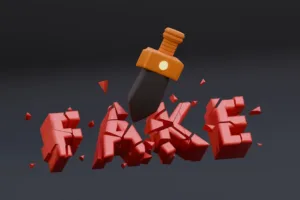
Internet infrastructure company Cloudflare reported a significant milestone in its Q1 2025 disruption summary: for the first time, government-directed internet shutdowns dropped to zero globally1. This marks a notable shift from previous years, where shutdowns were frequently used during protests, elections, or civil unrest. The decline suggests changing tactics in information control, with some governments opting for targeted censorship over wholesale blackouts.
Key Findings from Cloudflare’s Report
Cloudflare’s data indicates that no new government-ordered internet shutdowns occurred between January and March 2025. This contrasts sharply with 2024, when 167 shutdowns across 28 countries caused an estimated $7.69 billion in economic losses2. The absence of shutdowns coincides with fewer contentious elections and reduced geopolitical tensions in traditionally high-risk regions. However, the report cautions that this trend may not indicate improved digital rights, but rather a shift toward more sophisticated censorship methods.
Notable exceptions include Myanmar, where infrastructure damage from a March 2025 earthquake exacerbated existing internet restrictions, hindering disaster response efforts3. Syria also experienced outages, though these were attributed to repeated fiber optic sabotage rather than deliberate government action4.
Evolving Censorship Tactics
While full-scale shutdowns have declined, governments are increasingly employing targeted controls. Russia has implemented advanced deep packet inspection (DPI) systems and continued isolating its RuNet infrastructure5. Iran and China maintain pervasive censorship through national intranets and VPN restrictions. These methods allow selective blocking of platforms like X (formerly Twitter) or WhatsApp while keeping essential services online, reducing both economic impact and international backlash.
The table below compares common censorship techniques and their technical characteristics:
| Technique | Implementation | Detection Indicators |
|---|---|---|
| Full Shutdown | ISP-level routing changes | BGP anomalies, traceroute failures |
| Throttling | QoS policies on specific protocols | Packet loss patterns, latency spikes |
| DPI Filtering | Middlebox inspection of payloads | TCP RST injections, SNI blocking |
Technical Countermeasures
Organizations operating in high-risk regions should prepare contingency plans. Cloudflare recommends monitoring BGP updates for signs of impending shutdowns and maintaining alternative access methods. The following approaches have proven effective:
- Pre-deploying circumvention tools like Psiphon or Outline VPNs
- Configuring secondary DNS resolvers (e.g., Cloudflare’s 1.1.1.1)
- Establishing satellite internet fallbacks where legally permissible
Network administrators should particularly watch for TCP RST injections or sudden changes in latency patterns, which may indicate throttling rather than technical issues. Cloudflare’s Radar service provides real-time disruption monitoring that can help distinguish between natural outages and intentional interference.
Future Outlook
While the Q1 2025 data shows progress, experts warn against premature optimism. The same period saw increased legal pressure on telecom providers in several countries to comply with censorship requests. Russia’s mandated ISP “black boxes” demonstrate how shutdown capabilities can become institutionalized even when not actively used6.
The decline in shutdowns presents both opportunities and challenges. Reduced disruption benefits businesses and emergency services, but targeted censorship can be harder to detect and circumvent. Organizations should continue advocating for transparent internet policies while preparing technical safeguards against both old and new forms of interference.
References
- “Q1 2025 Internet Disruption Summary,” Cloudflare, 2025.
- “The Cost of Internet Shutdowns in 2024,” Top10VPN, 2025.
- “Myanmar Internet Shutdowns Hinder Earthquake Aid Response,” Reuters, Apr. 2025.
- “Statement on Nationwide Outages,” Syrian Ministry of Communications, 2025.
- “Reassessing RuNet: Russia’s Sovereign Internet,” Atlantic Council, 2021.
- “Russia Starts Rolling Out DPI Filtration Tech,” Meduza, Sep. 2019.





